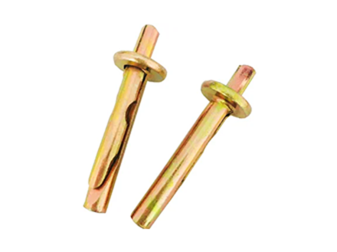Pro . 05, 2024 10:36 Back to list
expansion bolt types
Understanding Expansion Bolt Types A Comprehensive Guide
Expansion bolts, also known as expansion anchors or expansion fasteners, are crucial components in construction and engineering. They are designed to anchor various fixtures to concrete, brick, or masonry, providing a reliable and strong hold. This article explores various types of expansion bolts, their applications, strengths, and limitations, ensuring you choose the right type for your specific project.
Types of Expansion Bolts
1. Sleeve Anchors Sleeve anchors are one of the most common types of expansion bolts. They consist of a bolt with a cylindrical sleeve that expands upon tightening. Available in various lengths and diameters, sleeve anchors are versatile for use in concrete, masonry, and brick applications. They are suitable for medium loads but may not be appropriate for heavy-duty applications. Key considerations include ensuring the hole is properly drilled to the correct diameter and depth for maximum holding power.
2. Wedge Anchors Wedge anchors are another popular type, known for their strength and reliability. They feature a cone-shaped end and an expansion clip that grips the sides of the drilled hole when the bolt is tightened. Wedge anchors are particularly suited for heavy loads and applications where maximum holding strength is required, such as in machinery anchoring and structural support. However, they require a specific hole size and depth, and installation must be done carefully to avoid damaging the surrounding material.
3. Drop-In Anchors Drop-in anchors are commonly used in applications where a flush surface is required. They are designed for use in concrete and consist of a cylindrical sleeve that is installed in a pre-drilled hole, with a cone-shaped plug that expands the sleeve when a bolt is inserted and tightened. This type of anchor is ideal for applications such as hanging fixtures or installing railings, allowing for a clean, professional finish. One must ensure the hole is precisely measured, as the expansion occurs within the hole.
4. Toggle Bolts While not traditional expansion bolts, toggle bolts are often included in discussions of expansion anchors. These are particularly useful for attaching items to hollow walls made of drywall or plaster. Toggle bolts have wings that open up once inserted through the wall, providing a strong anchor. They are ideal for lighter loads, but caution should be exerted with their weight limits.
expansion bolt types

5. Through Bolts Through bolts are sometimes used in conjunction with expansion anchors for added security and strength. A through bolt is a long bolt that goes all the way through the material being anchored and is secured with a nut on the opposite side. This type provides maximum holding strength and is often used in heavy load applications.
Considerations When Choosing Expansion Bolts
When selecting an expansion bolt, consider several factors such as load requirements, material type, environmental conditions, and the type of fixture being installed. Always consult with engineering guidelines and load charts to ensure that the expansion bolt selected can handle the expected loads without risk of failure.
Additionally, proper installation is crucial for performance. Using the correct drill bit for hole size and depth, ensuring the clean-out of dust and debris from the hole, and following manufacturer guidelines for torque specifications will significantly enhance the holding power of the bolt.
Conclusion
Expansion bolts are essential in a variety of construction and installation scenarios, providing stability and security for various applications. Understanding the different types of expansion bolts and their specific uses will help you make informed decisions that enhance the integrity and safety of your projects. Whether you're anchoring shelves to a concrete wall or securing heavy equipment, selecting the appropriate expansion bolt is pivotal to achieving a robust and lasting hold. So, equip yourself with the knowledge of expansion bolts to ensure success in your anchoring endeavors.


